Our verdict
Pros
- Exceptionally comfortable and adaptable
- Expanded width for added room in the toebox
- Outsole is just built to last
- Ample cushioning catering to heel strikers
- Tailored for heel strikers
- Doubles as a cross-training or gym shoe
- Offers stable landings at slower paces
- Offers stable landings at slower paces
Cons
- Ride leans towards the firm side, lacking in bounce
- A bit on the heavy side
- Extremely poor energy return
- Slippery on wet surfaces
Audience verdict
- Top 29% most popular running shoes
Comparison
The most similar running shoes compared
+ + Add a shoe | |||||
|---|---|---|---|---|---|
| Audience score | 81 Good! | 77 Decent! | 85 Good! | 79 Good! | |
| Price | £80 | £65 | £50 | £60 | |
| Pace | Daily running | Daily running | Daily running | Daily running | |
| Shock absorption | Low | Moderate | Moderate | - | |
| Energy return | Low | Low | Low | - | |
| Traction | Moderate | Moderate | Low | - | |
| Arch support | Neutral | Neutral | Neutral | Neutral | |
| Weight lab Weight brand | 10.5 oz / 298g 9.9 oz / 280g | 9.3 oz / 265g 9.4 oz / 267g | 9.7 oz / 275g 10.7 oz / 303g | 9.3 oz / 264g 10 oz / 283g | |
| Drop lab Drop brand | 9.4 mm 10.0 mm | 10.1 mm 10.0 mm | 9.4 mm 10.0 mm | 9.6 mm 8.0 mm | |
| Strike pattern | HeelMid/forefoot | Heel | HeelMid/forefoot | HeelMid/forefoot | |
| Size | Slightly small | Slightly small | True to size | Slightly small | |
| Midsole softness | Firm | Balanced | Balanced | Balanced | |
| Difference in midsole softness in cold | Small | Small | Small | Normal | |
| Toebox durability | Bad | Decent | Bad | Decent | |
| Heel padding durability | Bad | Good | Bad | Bad | |
| Outsole durability | - | Good | Decent | Decent | |
| Breathability | Moderate | Moderate | Moderate | Moderate | |
| Width / fit | Medium | Medium | Wide | Medium | |
| Toebox width | Medium | Medium | Medium | Wide | |
| Stiffness | Moderate | Moderate | Moderate | Moderate | |
| Torsional rigidity | Moderate | Moderate | Flexible | Moderate | |
| Heel counter stiffness | Moderate | Moderate | Moderate | Moderate | |
| Heel lab Heel brand | 32.0 mm | 32.2 mm 32.0 mm | 31.2 mm 33.0 mm | 30.8 mm 30.0 mm | |
| Forefoot lab Forefoot brand | 22.6 mm | 22.1 mm 22.0 mm | 21.8 mm 23.0 mm | 21.2 mm 22.0 mm | |
| Widths available | NormalWideX-Wide | NarrowNormalWideX-Wide | NormalWide | NormalX-Wide | |
| Orthotic friendly | ✓ | ✓ | ✓ | ✓ | |
| Season | All seasons | All seasons | All seasons | All seasons | |
| Removable insole | ✓ | ✓ | ✓ | ✓ | |
| Ranking | #289 Bottom 22% | #339 Bottom 9% | #203 Bottom 45% | #323 Bottom 13% | |
| Popularity | #106 Top 29% | #60 Top 17% | #125 Top 34% | #286 Bottom 23% |
Who should buy
We think that the Under Armour Charged Assert 10 stands out as an outstanding shoe for the following runners:
- Budget-conscious heel strikers looking for a durable and stable running shoe.
- Those who value stability and don't mind a firm midsole.
- Beginners aiming for a shoe that not only accommodates casual runs, but is also versatile enough for cross-training or gym workouts.

Who should NOT buy
For those who prefer running on plush midsoles, or even ones that just lean toward the soft side, this shoe is not the best fit. The ride is notably firm. So, if you're willing to stretch your budget slightly, consider the ASICS Novablast 3. Watching your wallet? We lean towards the Nike Air Winflo 9.
Moreover, this shoe isn't tailored for fast-paced runs—it tends to work better during slower sessions. Instead, we'd recommend considering options like the Adidas Adizero Adios 7 or the ASICS Gel Pulse 13.
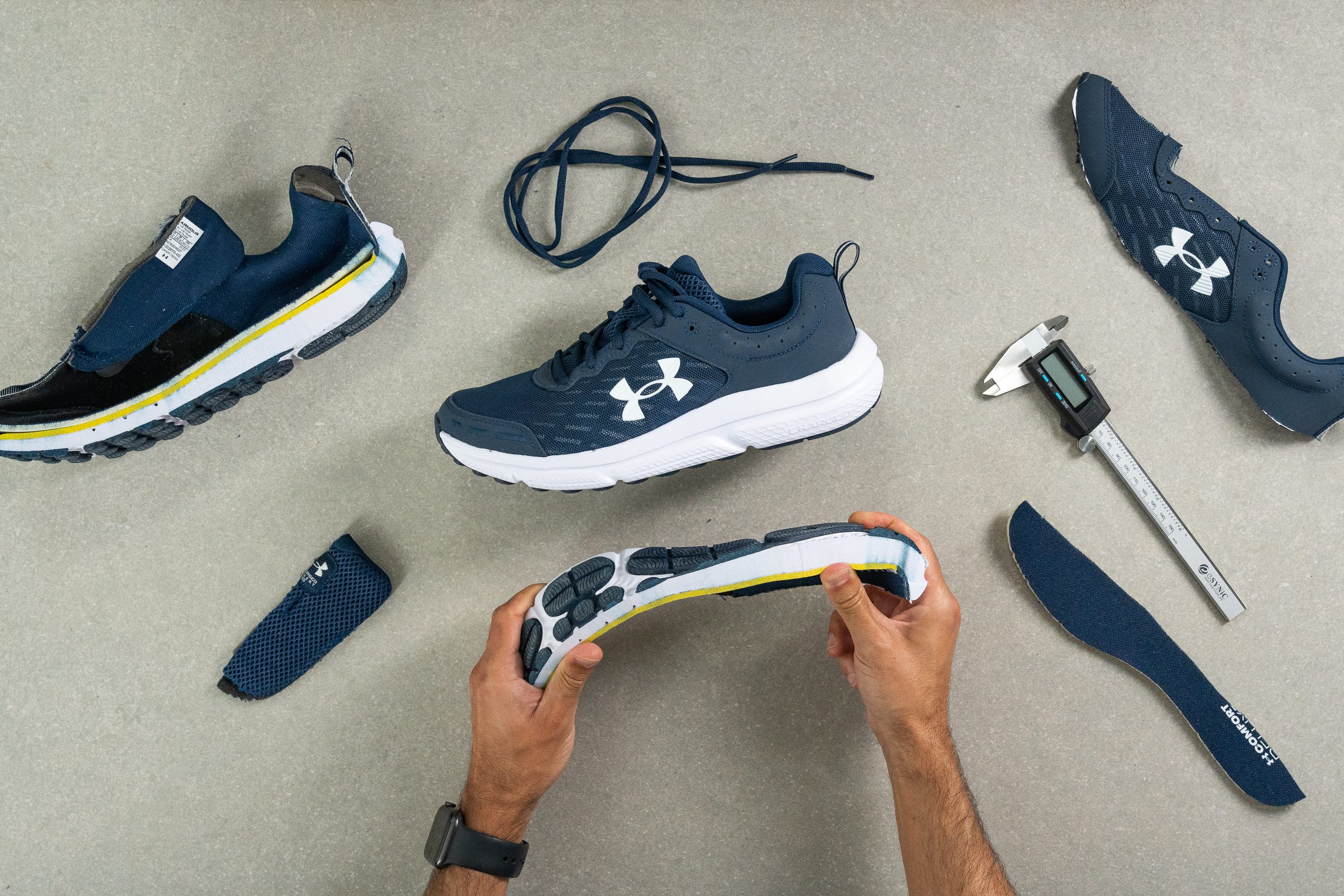
Cushioning
Shock absorption
Shock absorption is moderate leaning toward low, so don’t expect this shoe to handle long efforts comfortably. With 104 SA in the heel and 86 SA in the forefoot, it feels better suited for everyday tasks and the occasional run.

| Charged Assert 10 | 104 SA |
| Average | 129 SA |
Energy return
Unfortunately, we can't sugarcoat the poor energy return we found in the Charged Assert 10. At just 39.5%, it's one of the worst shoes we've ever tested in the lab and feels incredibly flat underfoot.
| Charged Assert 10 | 39.3% |
| Average | 58.5% |
Heel stack
Interestingly, it looks like most of the added weight has gone into the rubber.
The stack height in this new edition measures at 32.0 mm. This is not only lower than the average shoe, but it's also 2.0 mm less than its predecessor.

| Charged Assert 10 | 32.0 mm |
| Average | 34.8 mm |
Forefoot stack
We measured a mere 22.6 mm in the forefoot, including insole and outsole, which implies that the shoe is too thin in terms of foam.
This lack of cushion is not a good thing at all for forefoot strikers.
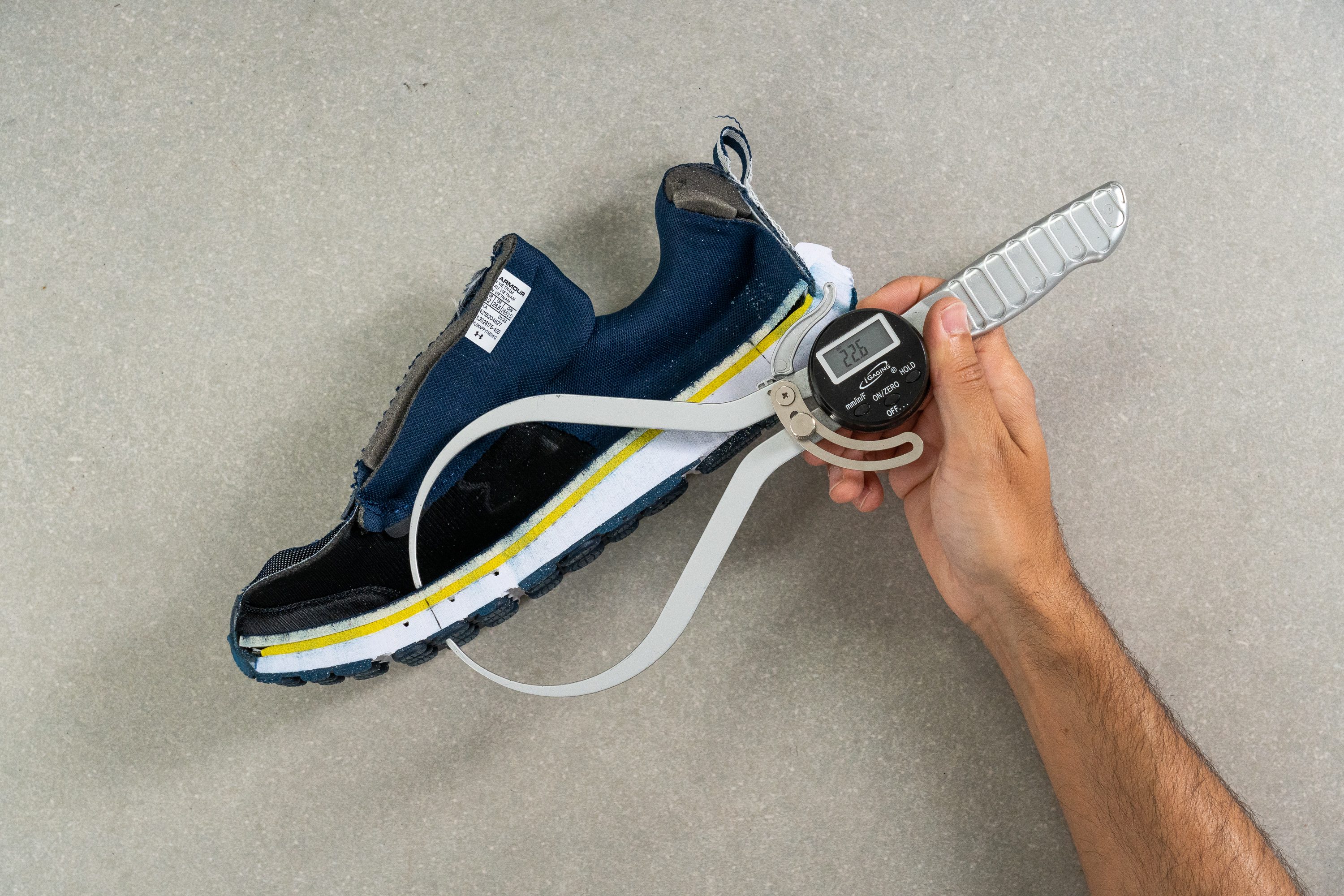
| Charged Assert 10 | 22.6 mm |
| Average | 26.2 mm |
Drop
This measurement confirms what we've been saying: this shoe is specifically designed with heel strikers in mind.
Sure, with a 9.4-mm heel-to-toe drop, it can accommodate midfoot strikers too. But we wouldn't recommend this one for forefoot strikers.
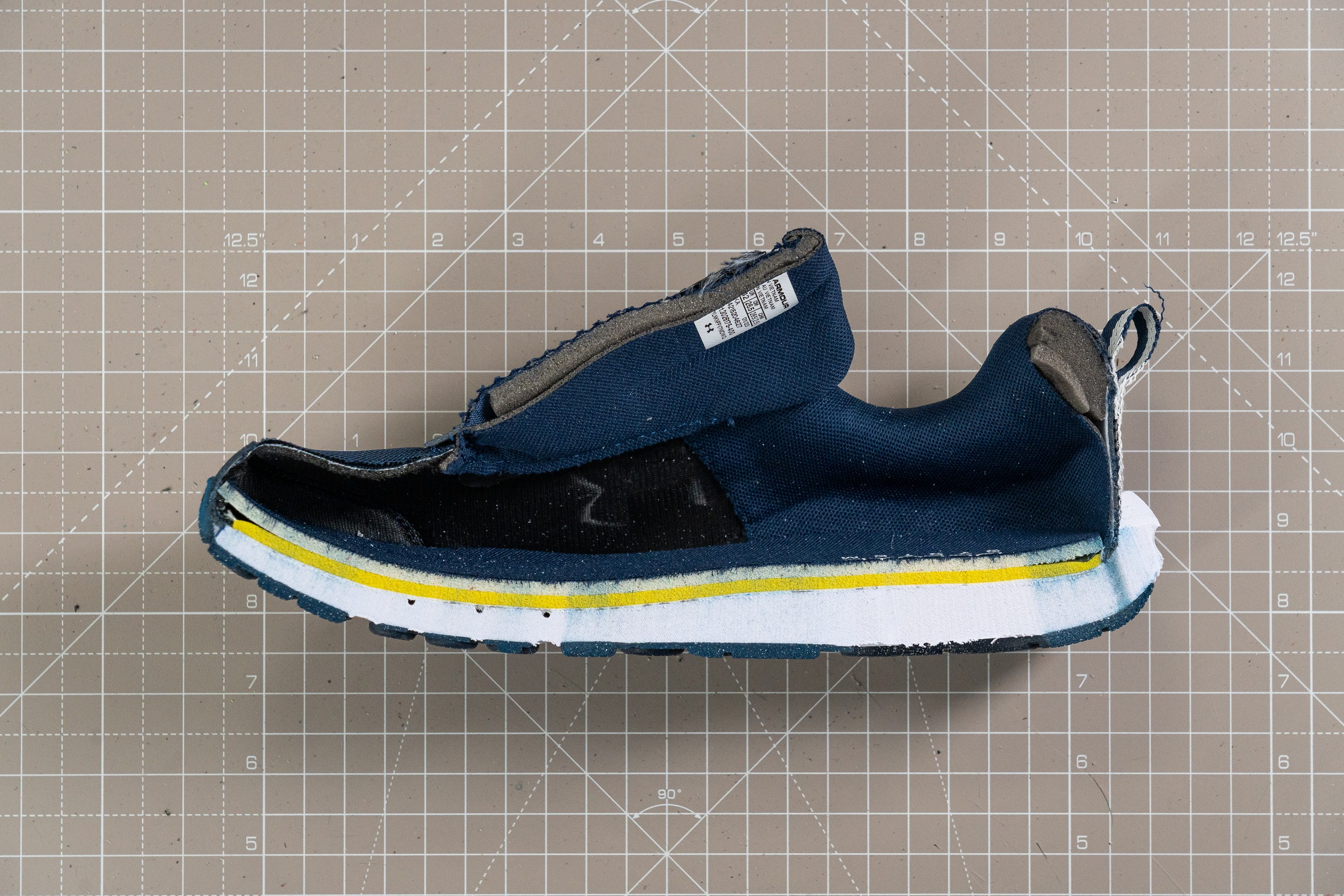
| Charged Assert 10 | 9.4 mm |
| Average | 8.6 mm |
Midsole softness
Once again, we're seeing the extremes with the Charged Assert. Measuring at a brick-like 31.1 HA, it's among the firmest shoes we've tested in recent months, which hints at a strategy we believe is quite interesting.
While most of the leading brands are leaning towards softer compounds to cater to the demand for a hyper-plush running experience, UA takes a different road.
We find this approach really cool, as the Charged Assert isn't going to outsell Nike or ASICS shoes in the mainstream market. So, why not think outside the box and serve a niche-market that's largely overlooked by the big boys?
For those curious about soft vs. firm midsoles, be sure to dive into our advanced guide!
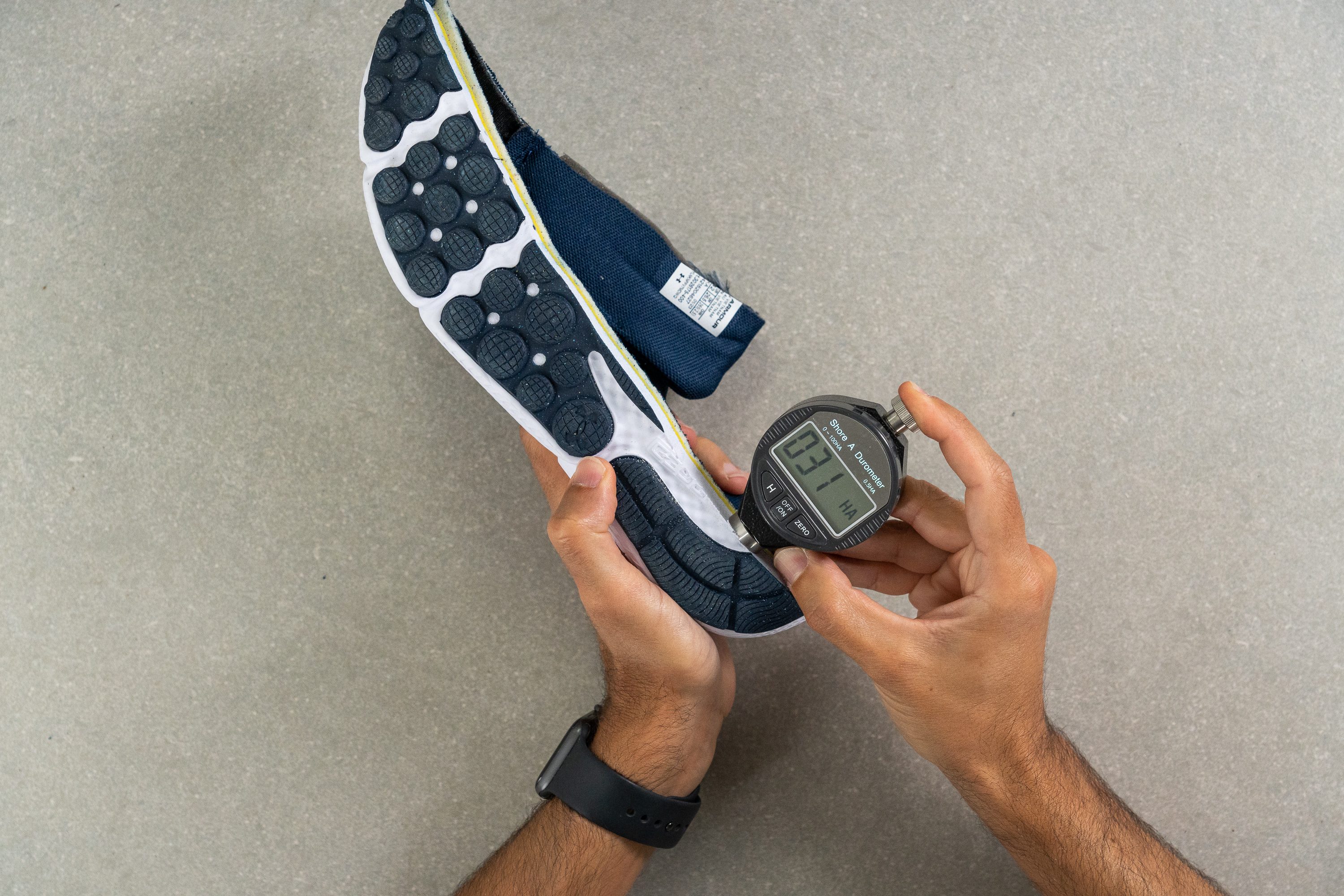
| Charged Assert 10 | 31.1 HA |
| Average | 20.4 HA |
Size and fit
Size
Under Armour Charged Assert 10 fits slightly small (121 votes).
Toebox width - widest part
If the shoe fits right, why change it? That seems to be Under Armour's thinking, given that there were hardly any complaints about toebox space in the CA9.
With the CA10, they've kept things consistent—the toebox width remains virtually unchanged at a roomy 99.2 mm, comfortably accommodating most feet.
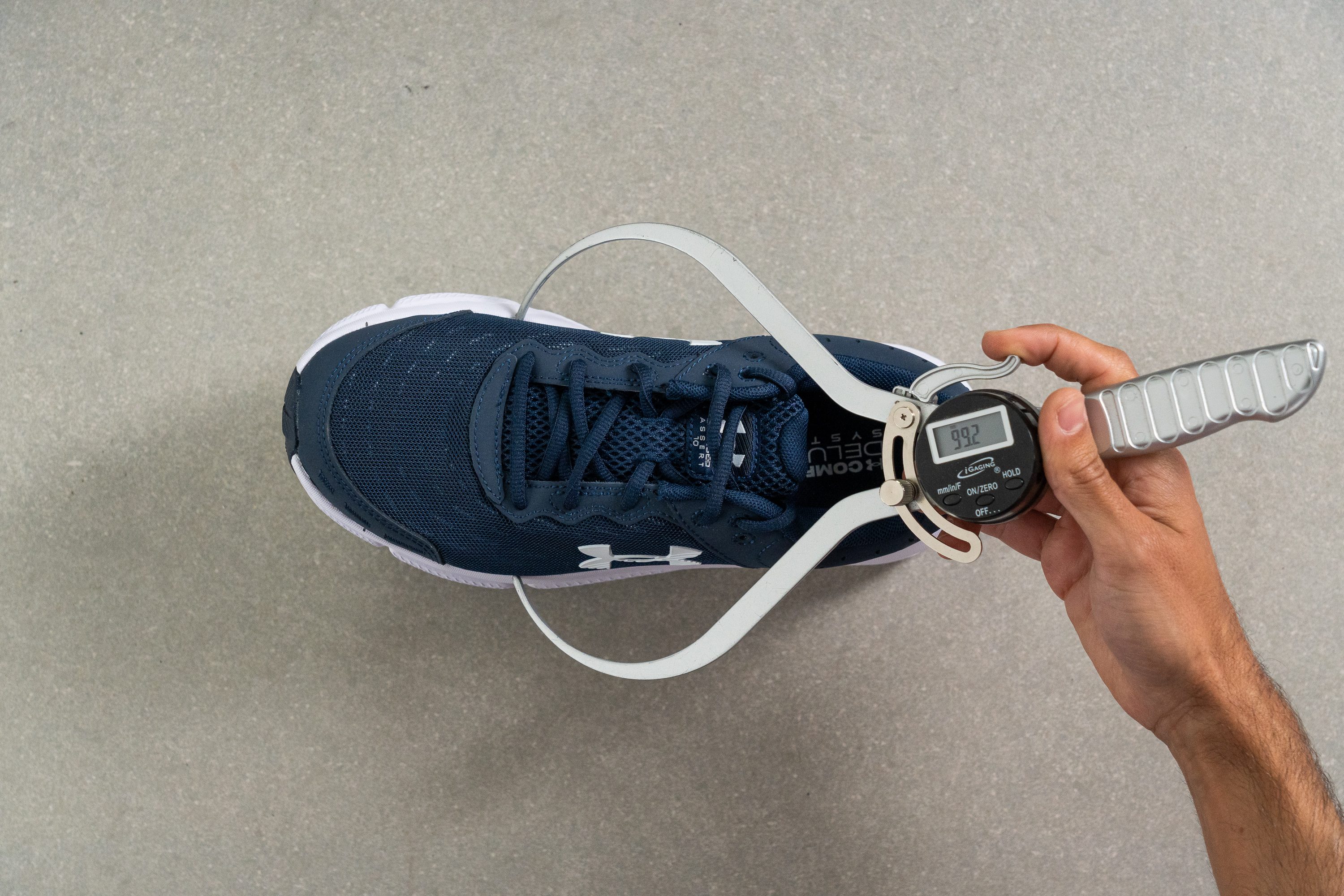
This test follows an older methodology, which is why you don't see recently tested shoes in the chart. Results from different methodologies can not be compared.
| Charged Assert 10 | 99.2 mm |
| Average | 98.5 mm |
Toebox width - big toe
Some users had pointed out that the toe box felt a bit narrow around the big toe in the v9.
That's why Under Armour has expanded this space by 2.4 mm. This change aims to provide a more comfortable fit for runners with wider feet in the toe area. Now, we measured it at the width here at a generous 77.1 mm.
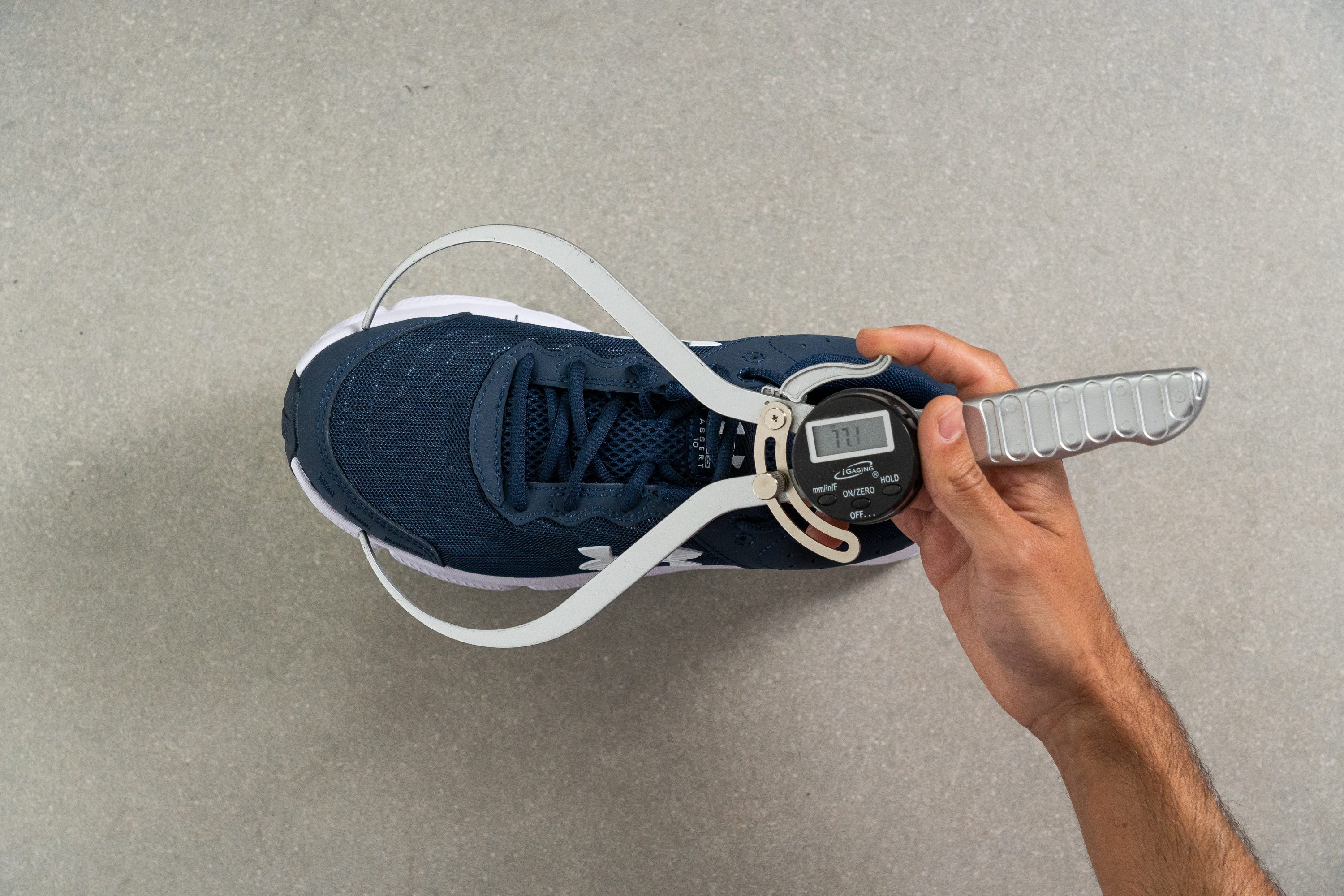
This test follows an older methodology, which is why you don't see recently tested shoes in the chart. Results from different methodologies can not be compared.
| Charged Assert 10 | 77.1 mm |
| Average | 78.4 mm |
Traction / Grip
Traction test
We highly recommend limiting the Charged Assert 10 to dry pavements only because its outsole can become an actual slipping hazard on wet concrete!
Brushing the shoe's forefoot against a wet slab of concrete with an applied force of 500N, our grip testing machine returned a very low friction score of 0.26. This indicates inferior traction on slippery roads and sidewalks.
| Charged Assert 10 | 0.26 |
| Average | 0.48 |
Outsole design
We found ourselves genuinely impressed with v9 in terms of outsole durability, but with v10, it feels like we've been transported to an entirely new universe of toughness. On top of that, the rubber now covers the midsole in a much smarter way to ensure optimal protection.
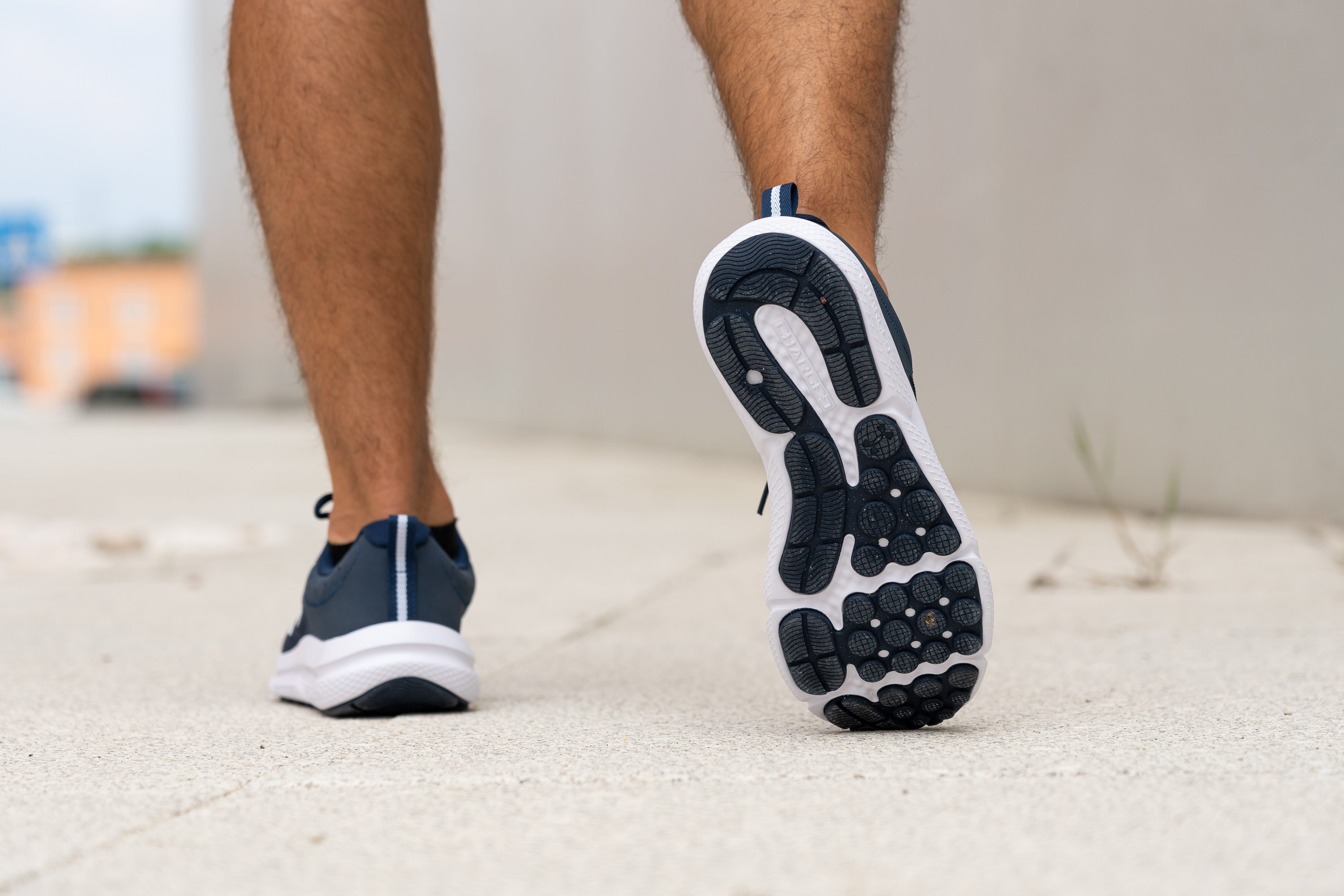
Flexibility / Stiffness
Before conducting our 30-degree bend test in the lab, the shoe felt slightly stiff underfoot and during our torsional assessments. That impression was confirmed when it scored 14.5N—right around the average.
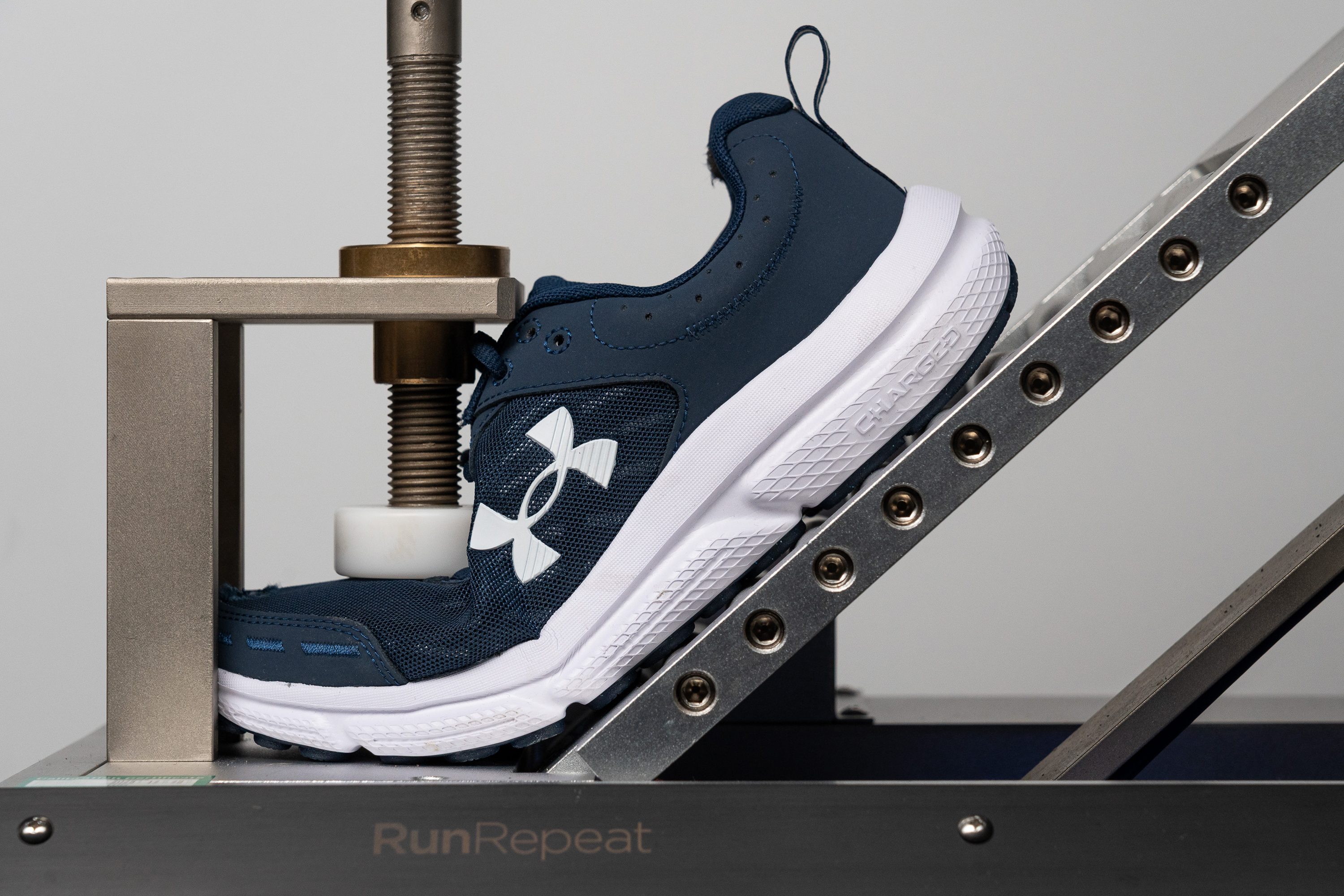
| Charged Assert 10 | 14.5N |
| Average | 15.3N |
Stiffness in cold (%)
However, keep in mind that the shoe maintains this level of flexibility only in mild or warm conditions.
As temperatures drop, the shoe stiffens considerably, as we discovered when we needed to make 35N of force following a 20-minute stint in the cold next to the ice cream in our freezer to bend it to 90 degrees.
Believe it or not, that's a whopping 100.9% increase—one of the most substantial we've ever noted in the lab.
| Charged Assert 10 | 101% |
| Average | 33% |
Weight
Indeed, the Charged Assert 10 has gained a bit of weight. Coming in at 10.5 oz or 298g for a US size 9, it's heavier by 0.3 oz or 8g.
| Charged Assert 10 | 10.5 oz (298g) |
| Average | 9.3 oz (264g) |
Breathability
One of the biggest letdowns with the Charged Assert 9 was its breathability. For a road running shoe, a score of 3 out of 5 was pretty disappointing. That's why we're thrilled to share that this version stepped it up a notch, earning a 4 out of 5 after our smoke-pumping lab test.
The light test indicated the shoe's breathability, particularly in the medial part, has improved. Still, it's not the most breathable shoe in the market—we believe there are better budget-friendly choices for summer training, like the ASICS Gel Excite 9.
When we took a closer look under our microscope, we found that Under Armour sticks with a thick mesh that blocks the air.

Sure, the upper might look like a masterpiece under the microscope—seriously, it's crazy how technology evolves—but we also think that UA needs to step up their game for the next Charged Assert. How about throwing in a few ventilation holes?
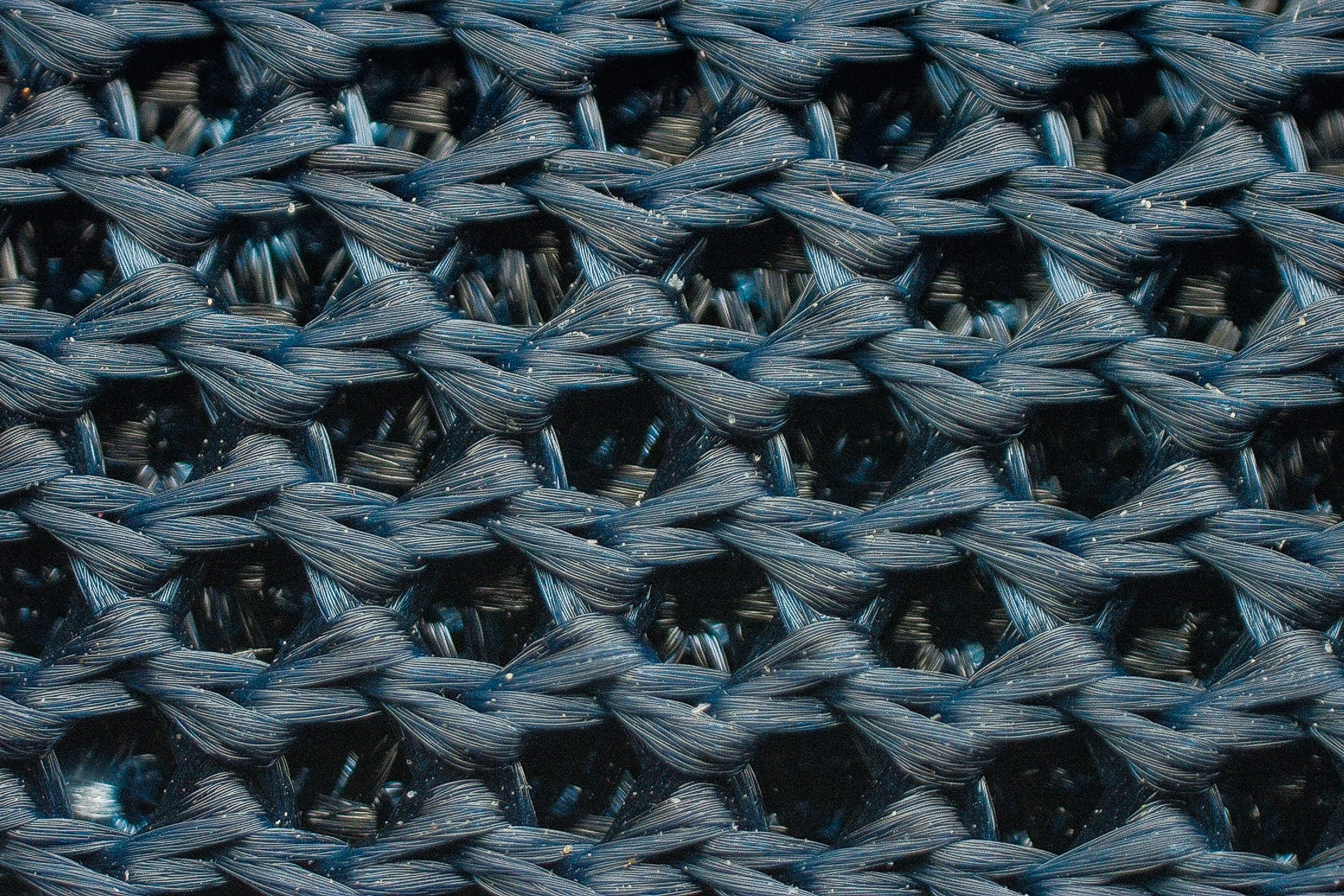
| Charged Assert 10 | 4 |
| Average | 3.7 |
Stability
Lateral stability test
One defining feature that sets the Charged Assert 10 apart is its remarkable stability. Naturally, having a firm midsole, as in this shoe, makes achieving such stability much simpler.
Torsional rigidity
To enhance stability from the previous model, the Charged Assert 10 outperformed its predecessor in our torsional rigidity test, earning a 3/5 as compared to the earlier version's 2/5.
Nonetheless, this change is quite minimal and was barely perceptible during our runs.
| Charged Assert 10 | 3 |
| Average | 3.5 |
Heel counter stiffness
Under Armour has shown they're attentive to customer feedback by addressing a significant issue found in the CA9 in this new model: heel slippage. The revamped design now features a sturdier heel counter that we've graded as 3/5.
But there's no need for concern—as demonstrated in the video above, a substantial, plush piece of foam shields your Achilles from the heel counter, providing an ultra-comfortable experience for your body's longest tendon.
| Charged Assert 10 | 3 |
| Average | 2.9 |
Midsole width - forefoot
As we've mentioned earlier, UA aimed to make this shoe more appealing to both midfoot and forefoot strikers, while not losing its core appeal to heel strikers.
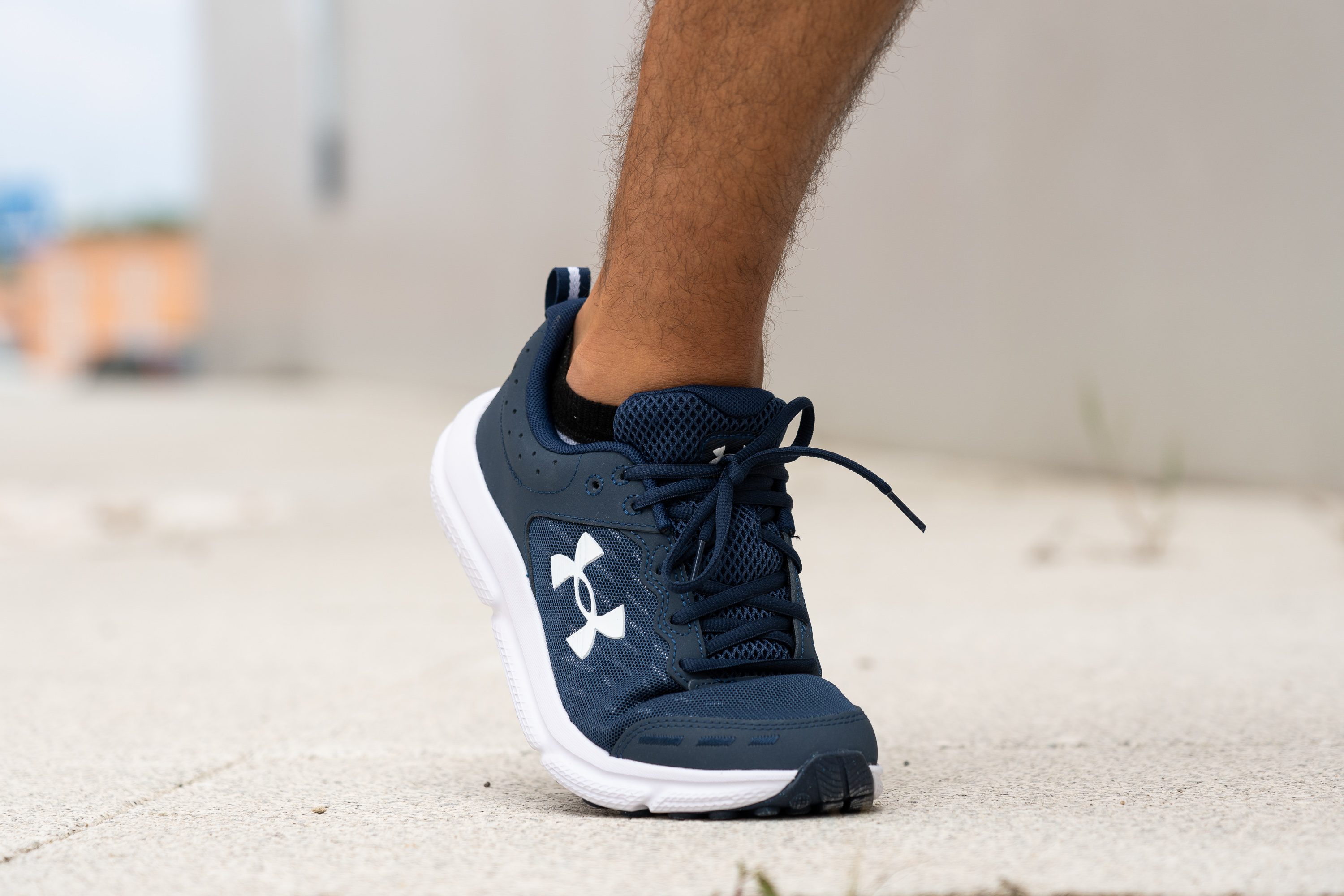
This is clear because the forefoot is now wider than ever, measuring 115.7 mm. It even surpasses the width of the average running shoe.

| Charged Assert 10 | 115.7 mm |
| Average | 114.4 mm |
Midsole width - heel
Measuring 91.3 mm, the heel is wider in the tenth edition of the Charged Assert than in its predecessor.
This makes it one of the most stable running shoes for beginners available today.
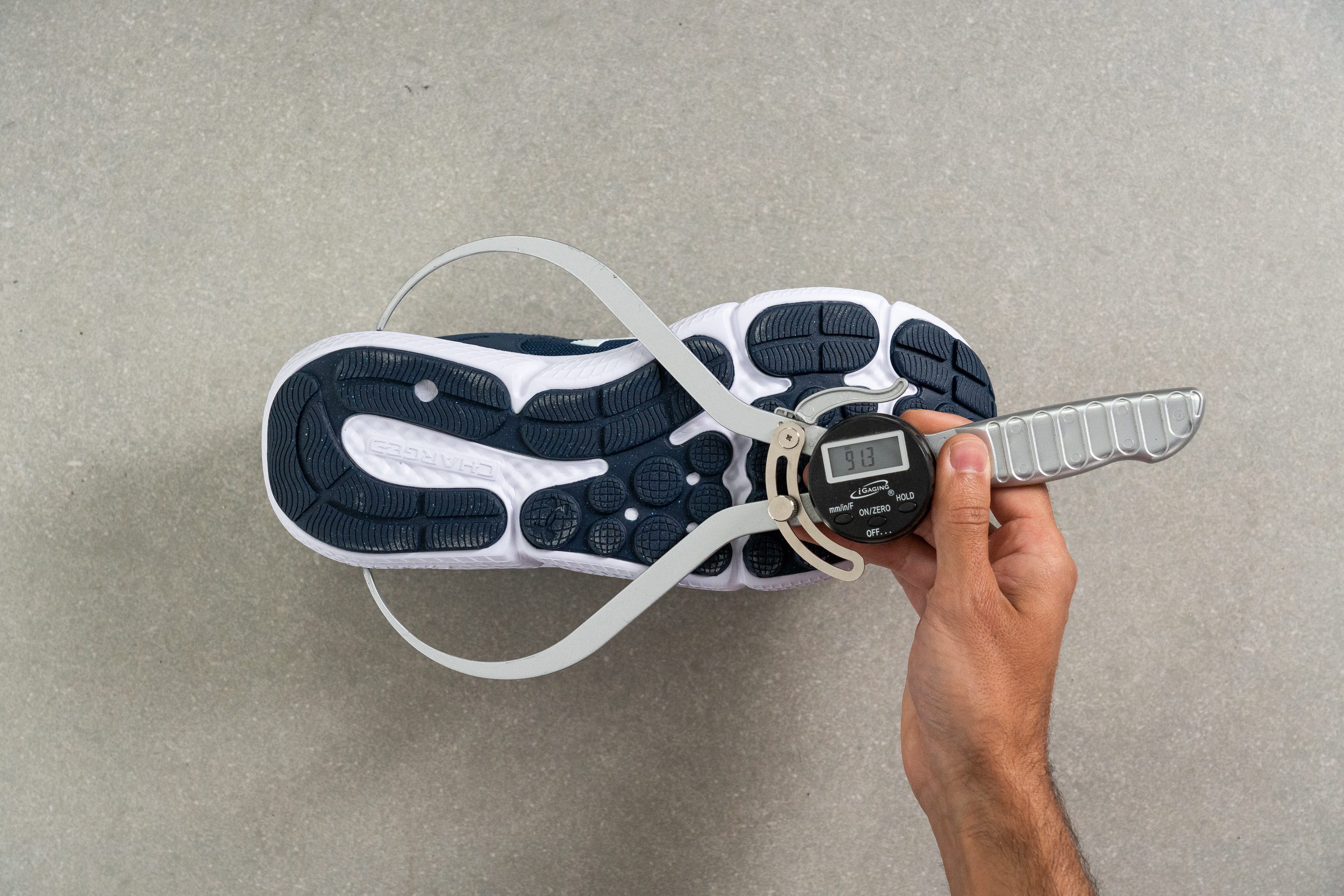
| Charged Assert 10 | 91.3 mm |
| Average | 90.7 mm |
Durability
Toebox durability
When it comes to the durability of the upper, the Charged Assert 9 was seriously underwhelming. Put it up against any shoe and it falls flat every time.
Regrettably, Under Armour hasn't switched up the engineered mesh for this 10th edition, so it's no shocker that it scored again a disastrous 1/5 in our Dremel test. Look at debris flying everywhere!
However, keep in mind that we always conduct this test at the same distance on every shoe. This means the reinforced toe cap in the CA10 remained untouched. But while this reinforcement offers some protection, it won't stop those runners who tend to wear holes in their shoes from doing so in this upper.
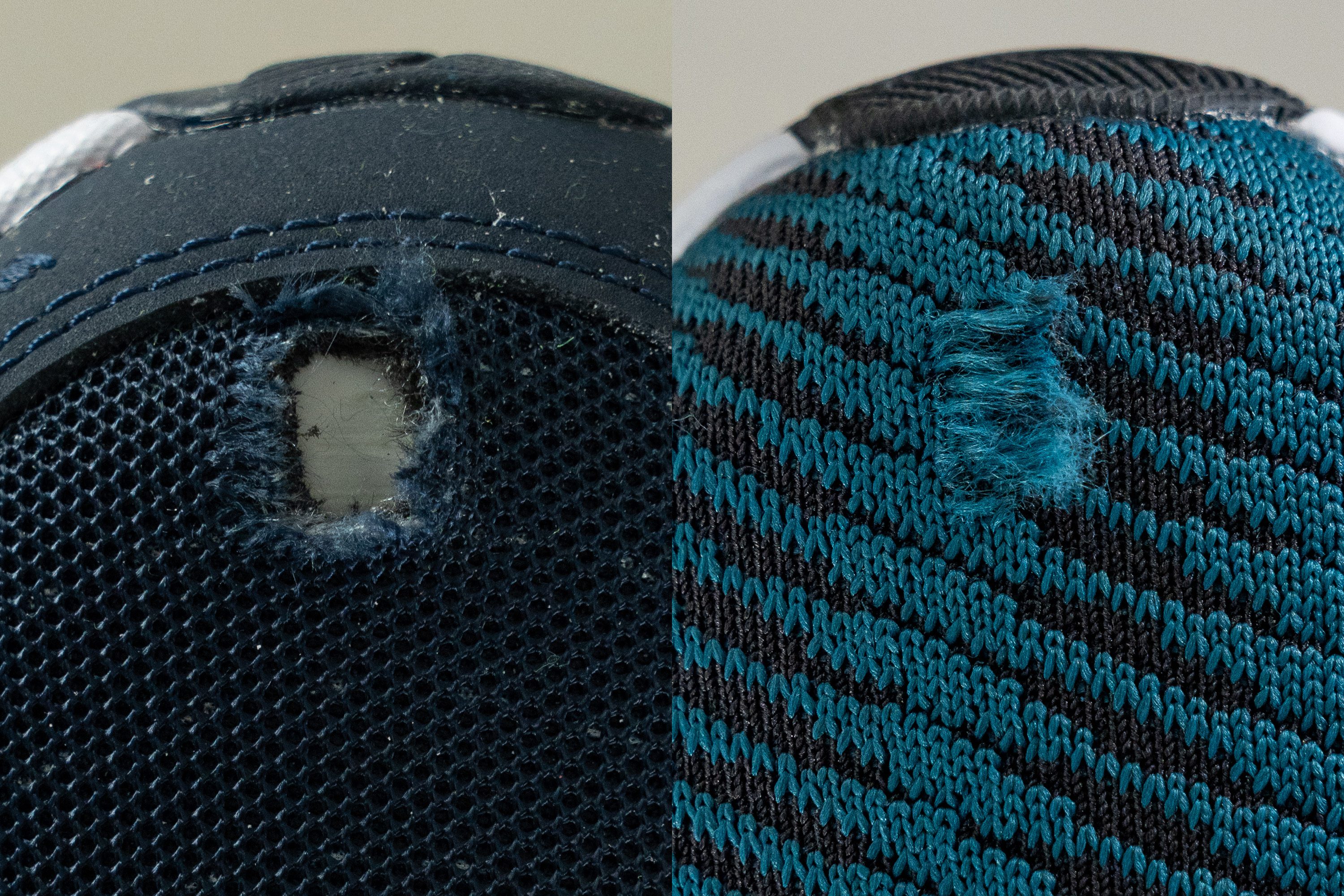
| Charged Assert 10 | 1 |
| Average | 2.6 |
Heel padding durability
The story continues with the heel padding. It also disappointingly scored a 1/5, the lowest grade possible.
What a letdown in an easy-to-improve aspect of this shoe.
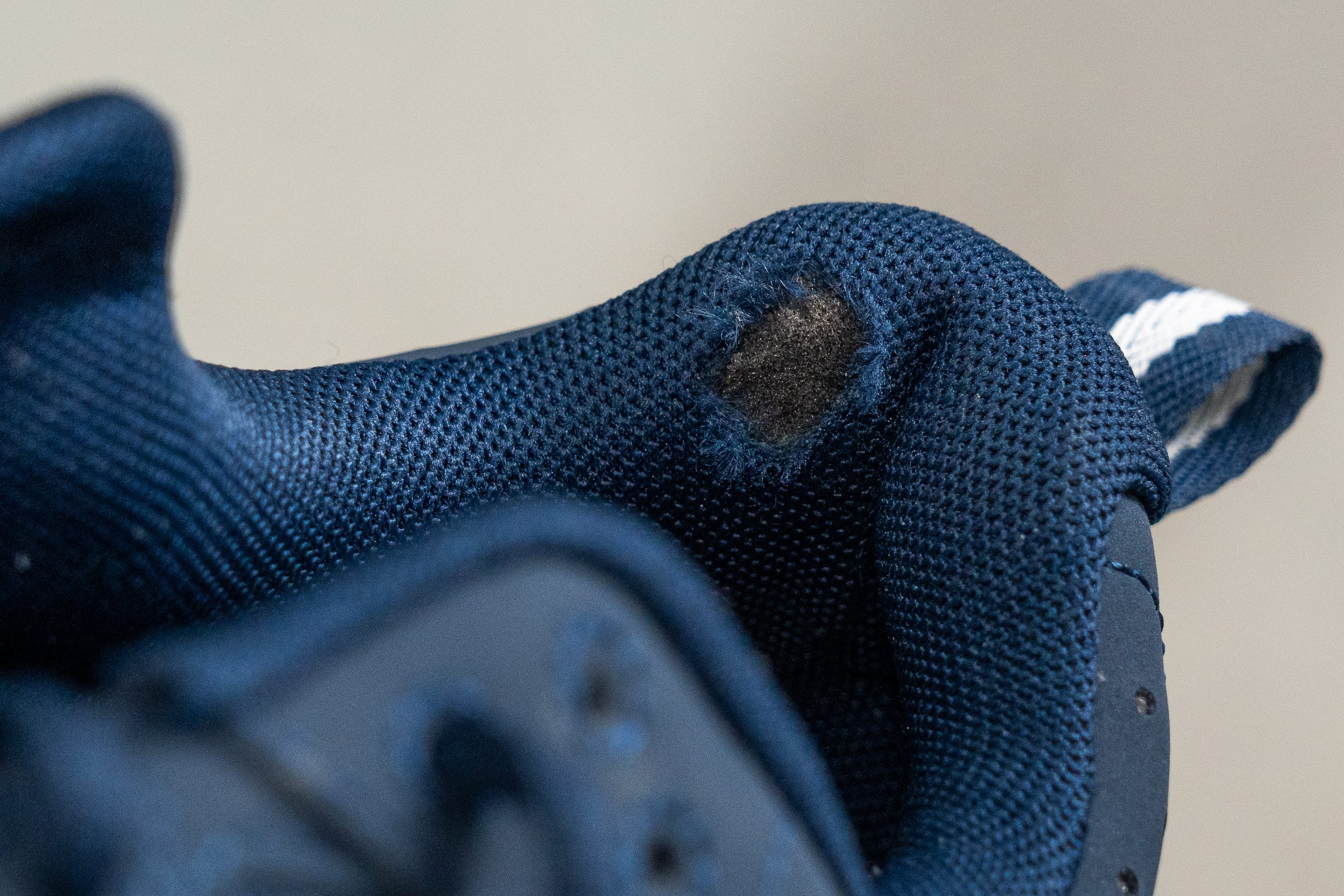
| Charged Assert 10 | 1 |
| Average | 3.4 |
Outsole hardness
After our lab tests, we can say that the Charged Assert series truly represents the epitome of extremes. On one hand, there's an upper that feels really delicate, but on the other, it's balanced out by an ultra-durable outsole that appears to have the longevity of a tortoise.

We found ourselves genuinely impressed with v9 in this regard, but with v10, it's like we've been transported to an entirely new universe of toughness in the outsole. And on top of that, the rubber covers the midsole in a much more clever way to ensure optimal protection.
The rubber hardness here is an awe-inspiring 87.8 HC, which stands as one of the most impressive figures we've ever witnessed in the lab.

| Charged Assert 10 | 87.8 HC |
| Average | 79.2 HC |
Outsole thickness
And the party goes on. We were already blown away by the above-average 4.9 mm rubber thickness of the prior model, but the Charged Assert 10 takes it up a notch with a jaw-dropping 5.3 mm measurement in our lab.
This is positive for the shoe's lifespan, but it does come with the trade-off of increased weight. Nevertheless, when it comes to budget-friendly running shoes, durability is often the top-priority for many runners.
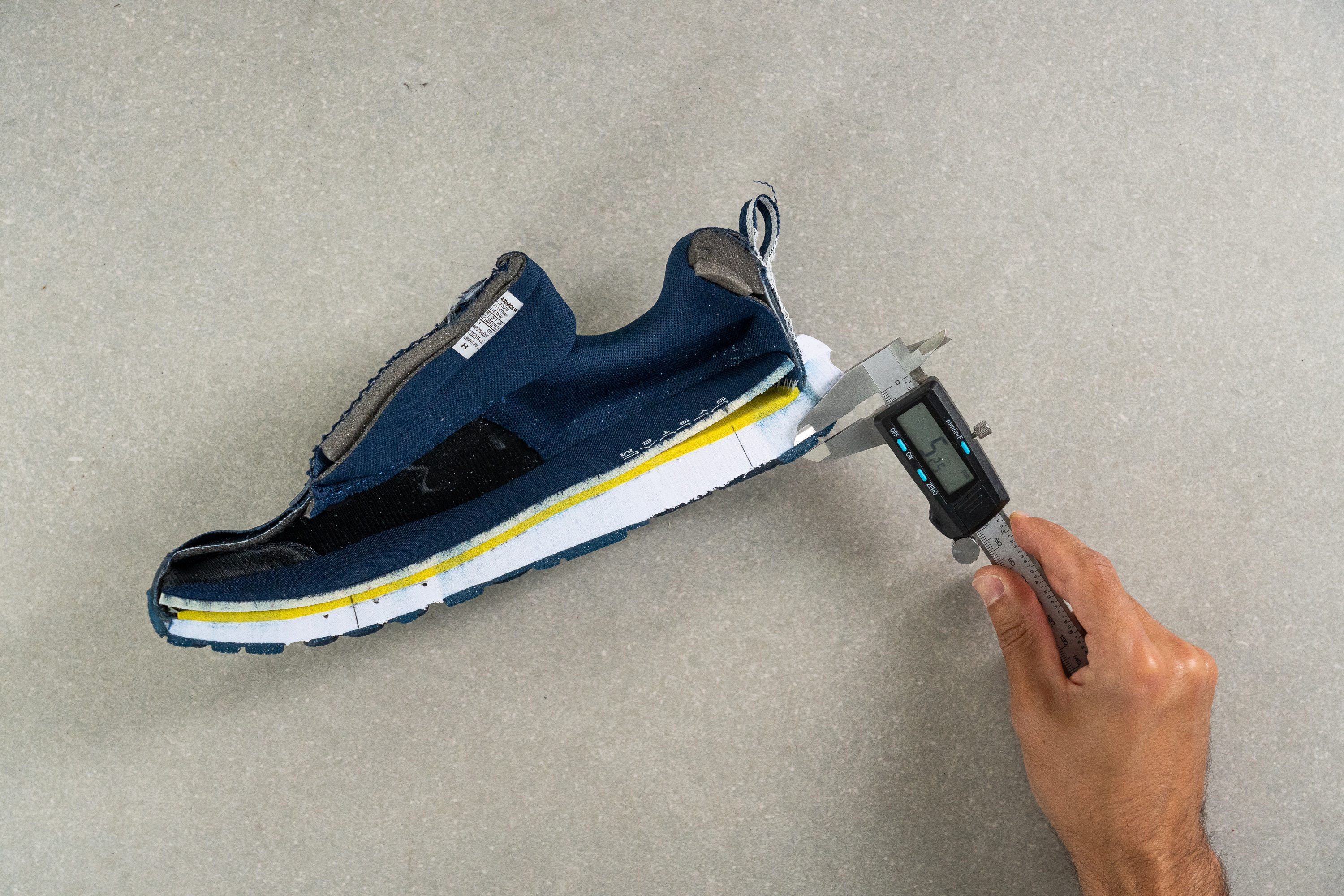
| Charged Assert 10 | 5.3 mm |
| Average | 3.2 mm |
Misc
Insole thickness
UA decided to play it safe with the insole, which we think is a smart move. At 4.2 mm, it's pretty much the same as any standard insole you'd find out there.
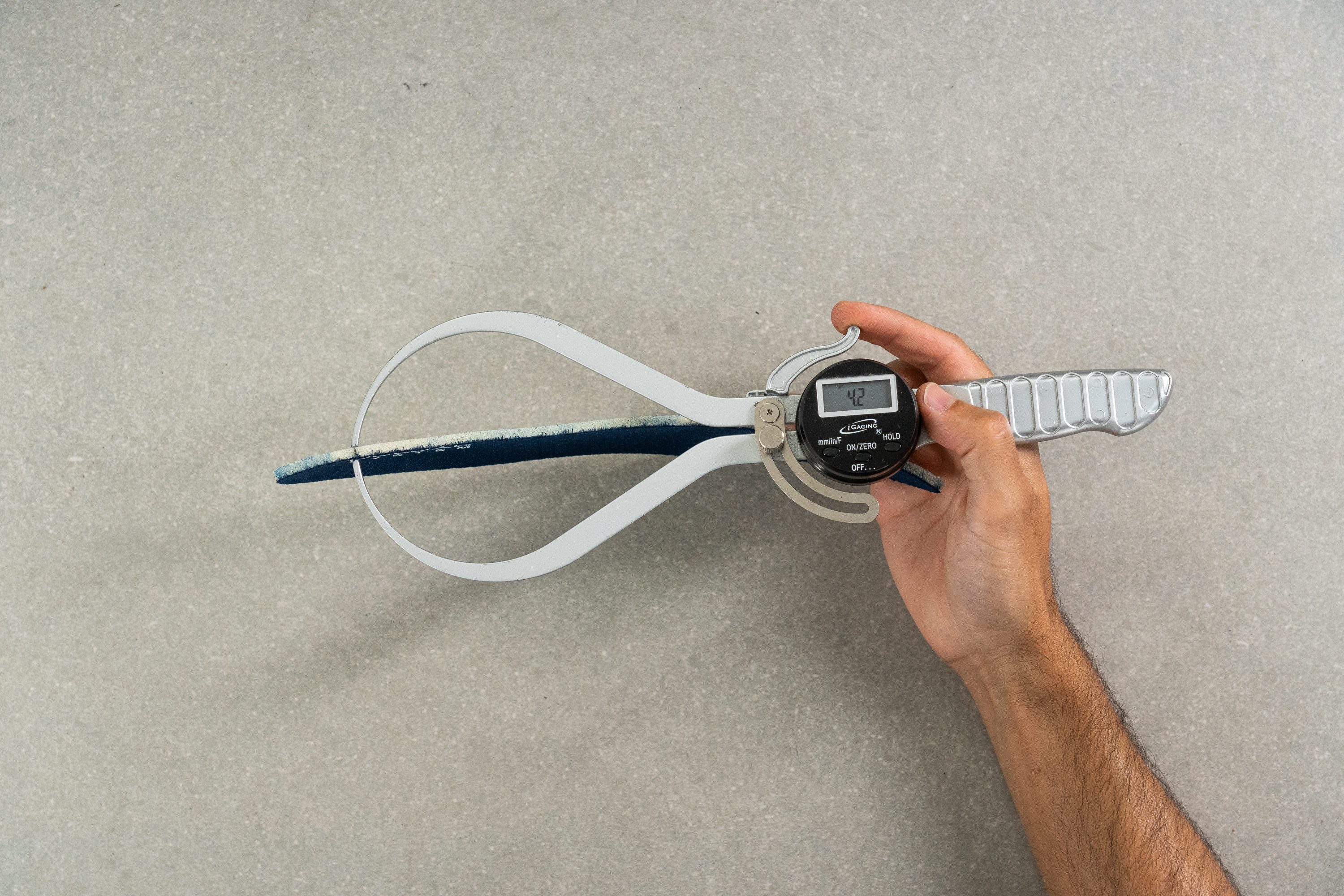
| Charged Assert 10 | 4.2 mm |
| Average | 4.5 mm |
Removable insole
Swapping the insole for a custom one presented no problems for us—it's not glued in at all. We had a hassle-free experience with this process.
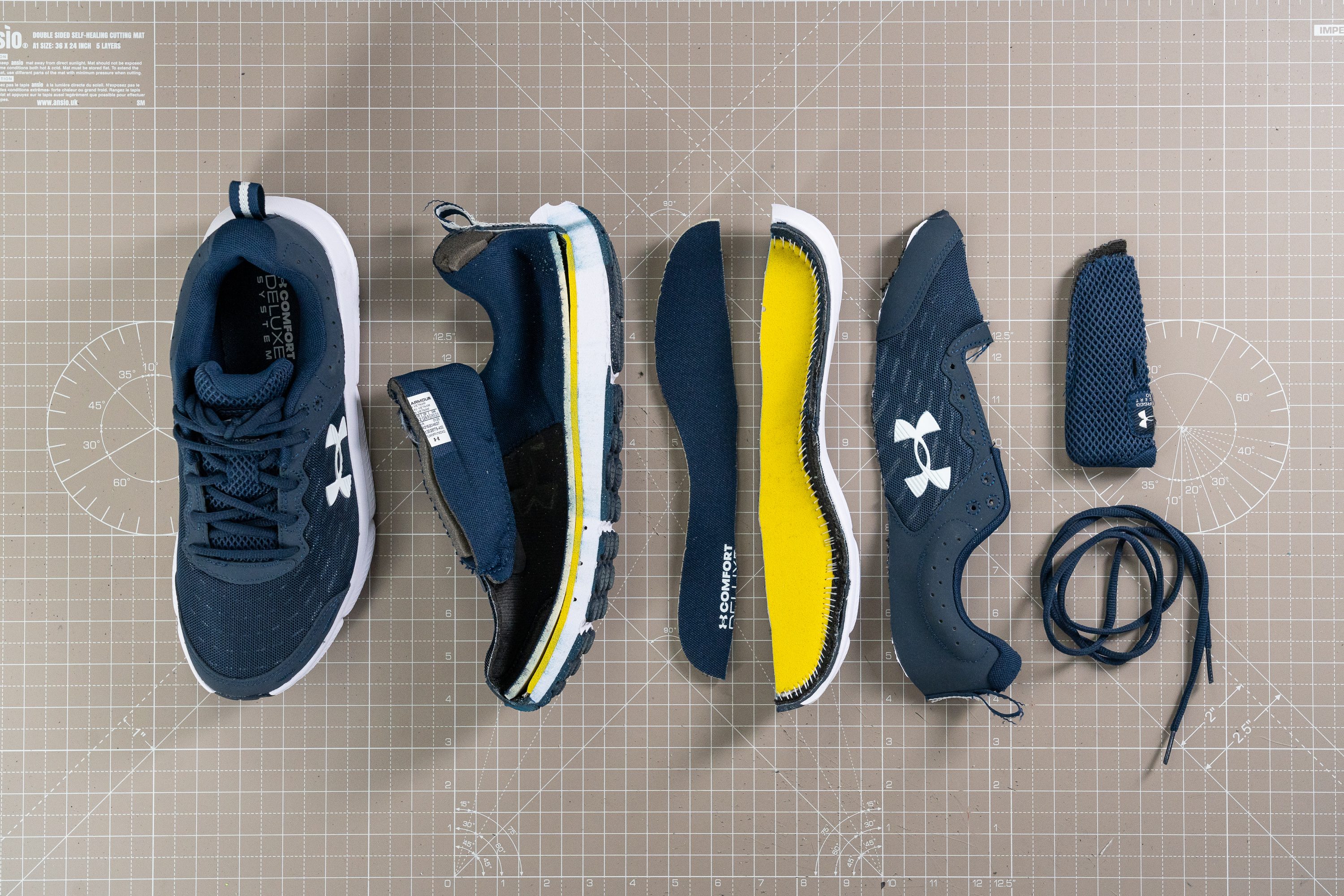
| Charged Assert 10 | Yes |
Midsole softness in cold (%)
The CA10's firm ride intensifies when the temperature drops. After spending 20 minutes in our freezer, we measured the shoe's softness at 38.4 HA.
So, if you thought it was firm in comfortable weather, brace yourself for a real brick in winter.
Even though the Charged Assert 10 becomes even firmer in the cold, it holds up great when compared against other similar shoes, increasing only by 23.3%.
It's particularly impressive given that it's tailored for beginners, a group of shoes that often fall short in such conditions.
| Charged Assert 10 | 23% |
| Average | 24% |
Tongue padding
The Charged Assert 10 truly excels in this area, which also explains its heavier weight.
We clocked the tongue at a staggering 8.5 mm, offering exceptional comfort and entirely eliminating the risk of lace bite.
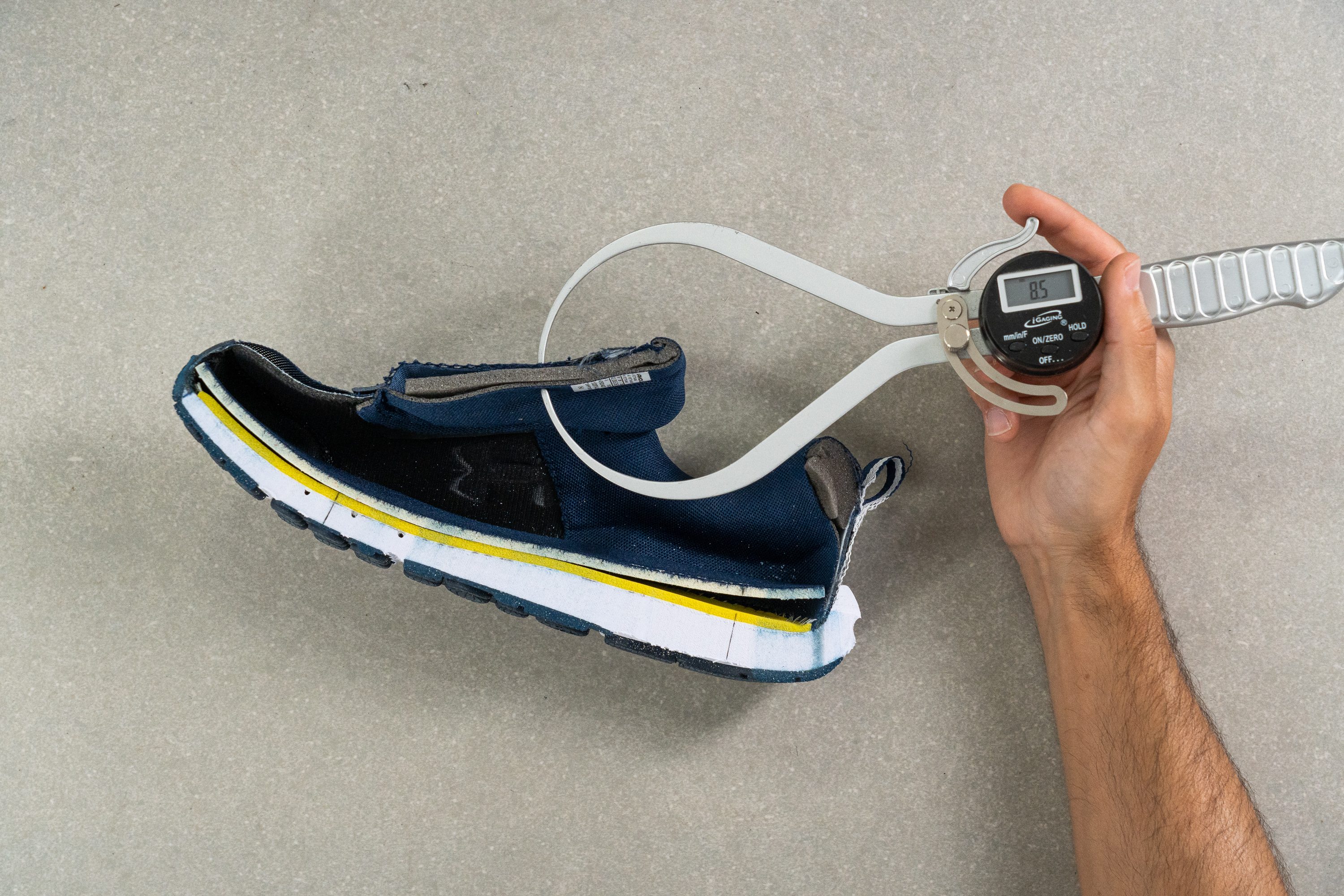
| Charged Assert 10 | 8.5 mm |
| Average | 5.8 mm |
Tongue: gusset type
In line with its standing as a value-oriented shoe aimed at beginners or budget-conscious runners, there's no gusset on the tongue, meaning it isn't attached to the sides.
This led to some tongue movements during our fastest runs.
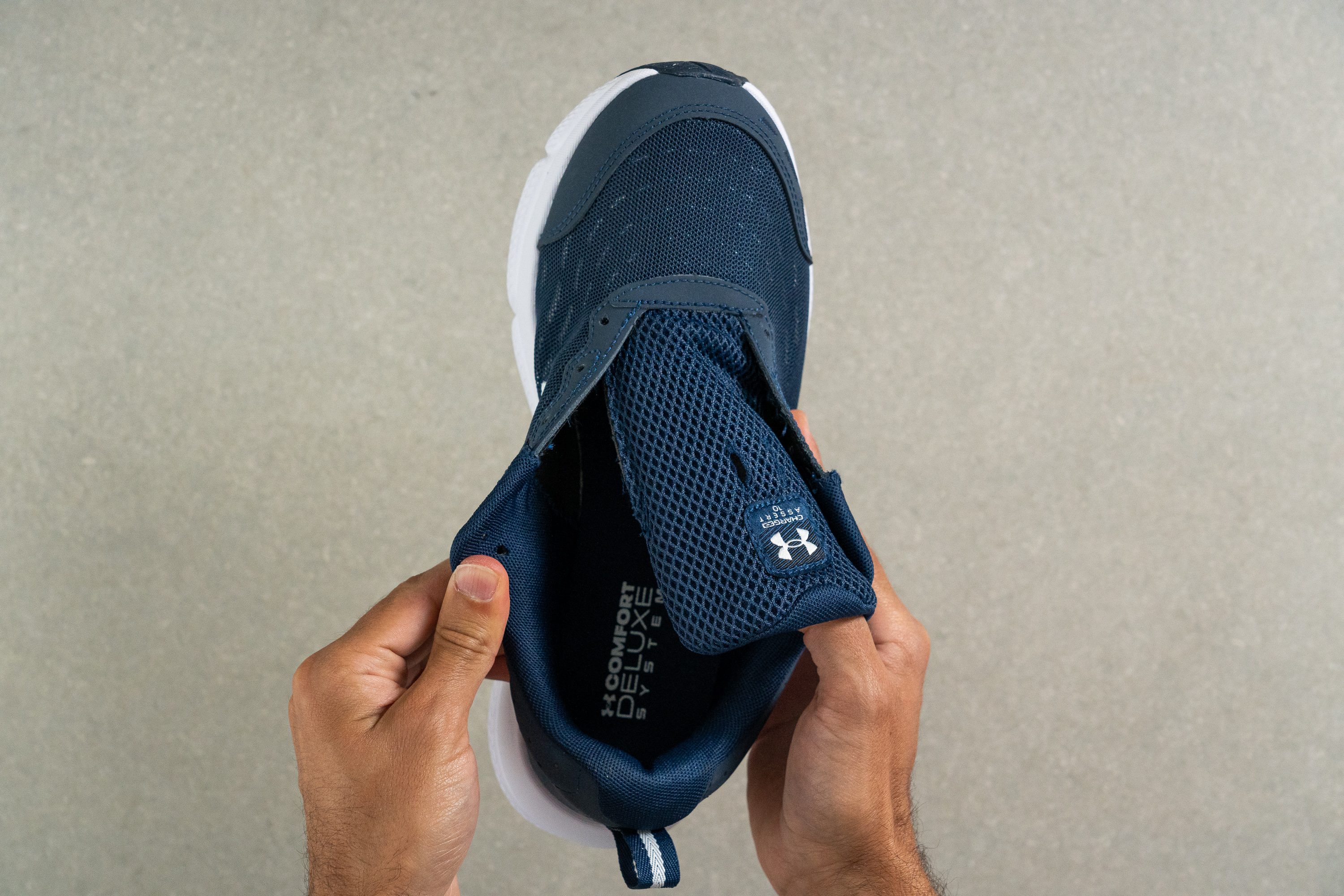
| Charged Assert 10 | None |
Heel tab
There's still a heel tab, so Under Armour, we love your dedication to quality over cost-cutting here!
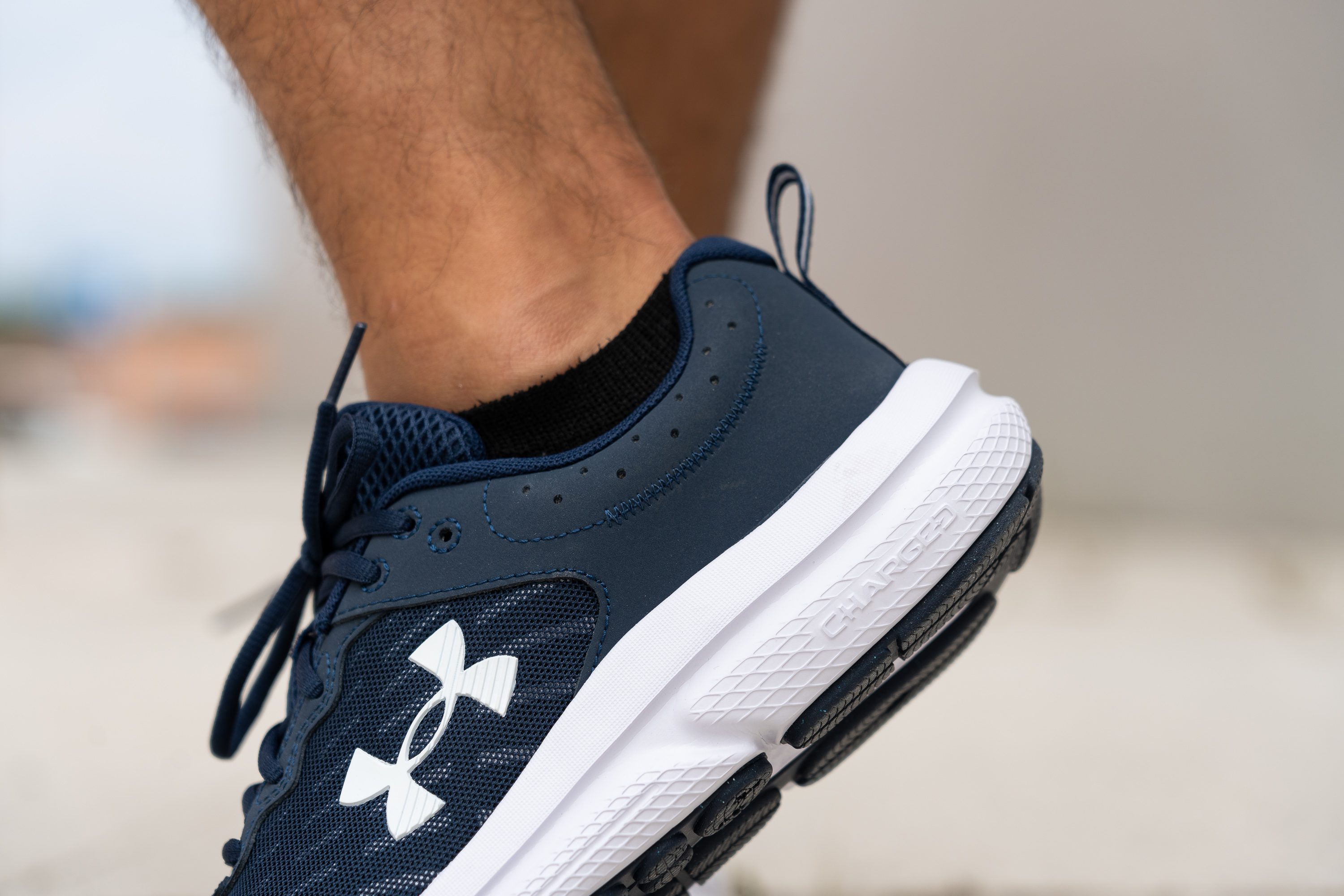
| Charged Assert 10 | Finger loop |












































